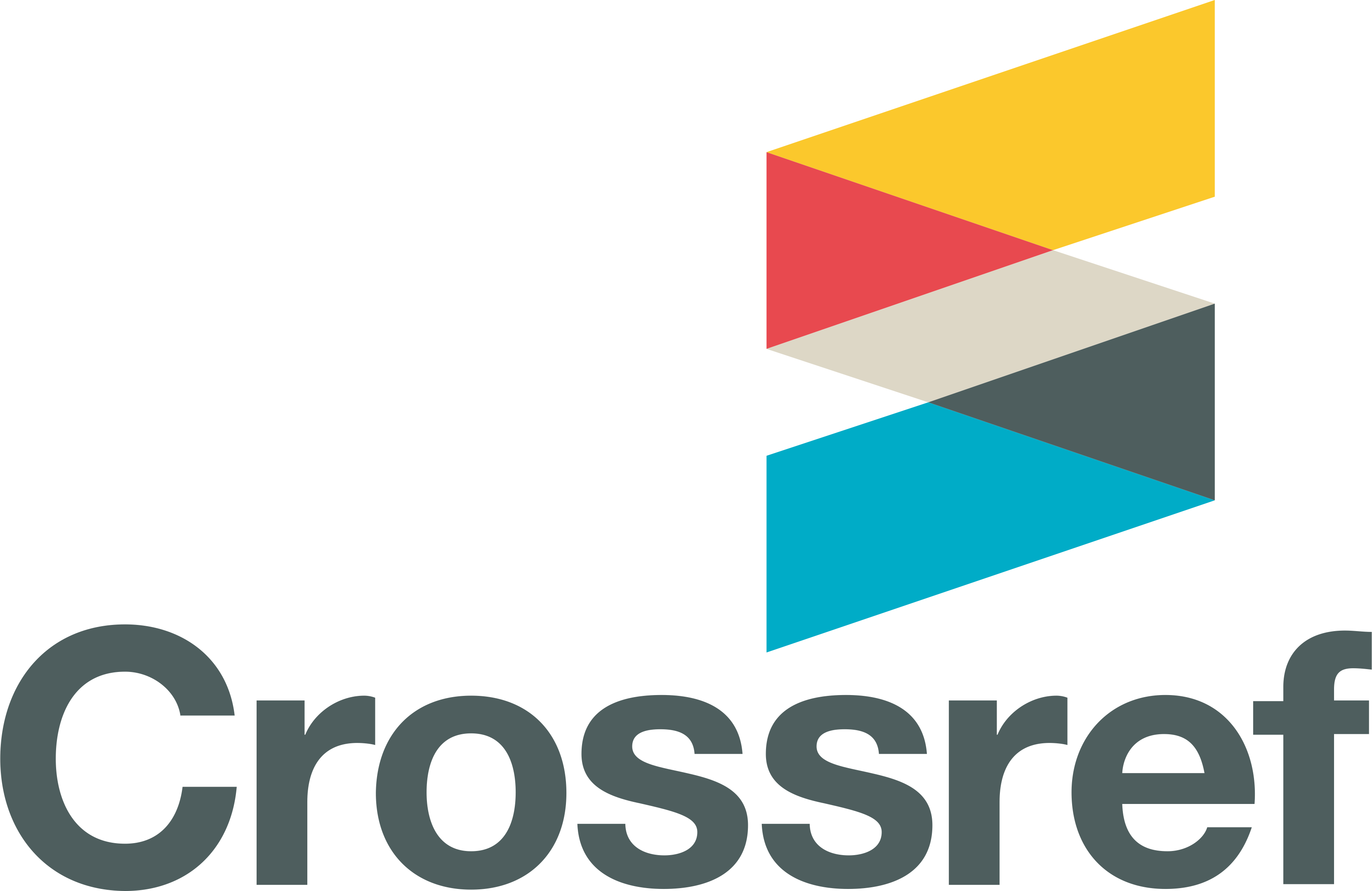Morphometric Variation, Growth Patterns, and Interpopulation Comparisons of Thalamita crenata (Rüppell, 1830) in Surigao del Norte and Agusan del Norte, Philippines
DOI:
https://doi.org/10.54610/jeseg.v6i2.128Keywords:
Morphometrics, allometry, breeding capacity, crabs, mangrove ecosystemAbstract
Thalamita crenata is a commercially and ecologically important crab species, yet comprehensive biological data on its populations in the Philippines remain limited. This study aimed to provide an initial assessment of T. crenata populations in Surigao City, Surigao del Norte and Buenavista, Agusan del Norte, Philippines. A total of 104 individuals were sampled and measured at each site. The maturity of the collected individuals was inferred from the mean values of their morphometric indices and the presence of ovigerous females. Descriptive comparisons of morphometric values between the two sites suggested potential variations in growth conditions. Mann-Whitney U tests revealed significant differences in cheliped dactylus length (CDL) between the two populations, with individuals from Buenavista exhibiting larger chelipeds (males: U = 387.5, z = 4.38, p < 0.0001; females: U = 639, z = -6.11, p < 0.0001). Strong positive Pearson’s r correlations between carapace dimensions (width and length) and body weight were observed in both areas (Surigao City: r = 0.677-0.695; Buenavista: r = 0.923-0.834) highlighting the utility of carapace size measurements for monitoring growth patterns. These findings provide valuable baseline data for future assessments of mangrove health, fisheries production, and environmental suitability for T. crenata. Future investigations should examine environmental factors influencing growth variations and assess potential threats to these populations. Such efforts will be crucial for developing effective strategies for more proactive environmental management among related marine ecosystems.
References
Al-Khayat, J. A., & Giraldes, B. W. (2020). Burrowing crabs in arid mangrove forests on the southwestern Arabian Gulf: Ecological and biogeographical considerations. Regional Studies in Marine Science, 39,101416. https://doi.org/10.1016/j.rsma.2020.101416
Asaduzzaman, M., Jahan, I., Noor, A. R., Islam, M. M., & Rahman, M. M. (2021). Multivariate morphometric investigation to delineate species diversity and stock structure of mud crab Scylla sp. Along the coastal regions of Bangladesh. Aquaculture and Fisheries, 6(1), 84–95.https://doi.org/10.1016/j.aaf.2020.03.010
Bezerra Ribeiro, F., Matthews Cascon, H., & Arruda Bezerra, L. E. (2017). Morphometric sexual maturity and allometric growth of the crab Sesarma rectum Randall, 1840 (Crustacea: Sesarmidae) in an impacted tropical mangrove in northeast Brazil. Latin American Journal of Aquatic Research, 41(2), 361-368. https://doi.org/10.3856/vol41-issue2-fulltext-15
Buitre, M. J. C., Zhang, H., & Lin, H. (2019). The Mangrove Forests Change and Impacts from Tropical Cyclones in the Philippines Using Time Series Satellite Imagery. Remote Sensing, 11(6), Article 6. https://doi.org/10.3390/rs11060688
Capangpangan, R., Lilibeth, A., Cane, F., Lincuna, M., Rañon, J., Amor, R., Obena, R., & Pineda, C. (2015). Speciation and Bioavailability of Trace Metals (Cd, Cu and Pb) in Marine Sediment Samples from Placer Bay near Manila Mining Corporation, Surigao City, Philippines. Annals of Studies in Science and Humanities, 1(2), 12-34.
Capparelli, M. V., Abessa, D. M., & McNamara, J. C. (2016). Effects of metal contamination in situ on osmoregulation and oxygen consumption in the mudflat fiddler crab Uca rapax (Ocypodidae, Brachyura). Comparative Biochemistry and Physiology Part C: Toxicology & Pharmacology, 185–186, 102–111. https://doi.org/10.1016/j.cbpc.2016.03.004
Chen, C.-W., Chen, C.-F., Ju, Y.-R., & Dong, C.-D. (2016). Assessment of the bioaccumulation and bio-degradation of butyltin compounds by Thalamita crenata in Kaohsiung Harbor, Taiwan. International Biodeterioration & Biodegradation, 113, 97–104. https://doi.org/10.1016/j.ibiod.2016.02.018
Davie, P. J. F. (2021). Crabs: A Global Natural History. Princeton University Press.
Ebol, E. L., Donoso, C. H., Saura, R. B. D., Ferol, R. J. C., Mozar, J. R. D., Bermon, A. N., Manongas, J., Libot, J. C. H., Matabilas, C. J., Jumawan, J. C., & Capangpangan, R. Y. (2020). Heavy metals accumulation in surface waters, bottom sediments and aquatic organisms in Lake Mainit, Philippines. International Letters of Natural Sciences, 79. https://doi.org/10.18052/www.scipress.com/ILNS.79.40
Elvira, M., Garcia, C., Calomot, N., Seronay, R., & Jumawan, J. (2018). Heavy metal concentration in sediments and muscles of mud clam Polymesoda erosa in Butuan Bay, Philippines. Journal of Biodiversity and Environmental Sciences, 9(3), 47-56
Ewers-Saucedo, C. (2019). Evaluating reasons for biased sex ratios in Crustacea. Invertebrate Reproduction & Development, 63(3), 222–230. https://doi.org/10.1080/07924259.2019.1588792
Green, B. S., Gardner, C., Hochmuth, J. D., & Linnane, A. (2014). Environmental effects on fished lobsters and crabs. Reviews in Fish Biology and Fisheries, 24(2), 613–638. https://doi.org/10.1007/s11160-014-9350-1
Hamid, A., Batu, D. T. L., Riani, E., & Wardiatno, Y. (2018). Carapace width-weight relationships and condition factor of blue swimming crab, Portunus pelagicus Linnaeus, 1758 (Crustacea: Decapoda) in Lasongko Bay, Southeast Sulawesi, Indonesia. Advances in Environmental Biology. 12(11). DOI: 10.22587/aeb.2018.12.11.2
Hamid, A., Wardiatno, Y., & Irawati, N. (2019). Biological aspects of genus Thalamita Latreille, 1829 (Decapoda: Portunidae) in Lasongko Bay, Southeast Sulawesi, Indonesia. Aquaculture, Aquarium, Conservation & Legislation - International Journal of the Bioflux Society 12(4), 1335-1348.
Johnston, D. J., & Yeoh, D. E. (2020). Carapace width-weight relationships of blue swimmer crab Portunus armatus (A. Milne-Edwards, 1861) (Crustacea: Brachyura: Portunidae) in southwestern Australia: influences of sex, decadal change, environment, and season. Journal of Crustacean Biology, 40(5), 526–533. https://doi.org/10.1093/jcbiol/ruaa046
Jumawan, J. H., Ruales, J. J. J., & Avila, M. C. A. (2022). New distribution record of Varuna litterata from Caraga Region, Philippines: Analysis on morphometry, length/width-weight relationship, and condition factor. Biodiversitas Journal of Biological Diversity, 23(6). https://doi.org/10.13057/biodiv/d230620
Koch, M., Spiridonov, V. A., & Ďuriš, Z. (2023). Revision of the generic system for the swimming crab subfamily Portuninae (Decapoda: Brachyura: Portunidae) based on molecular and morphological analyses. Zoological Journal of the Linnean Society, 197(1), 127–175. https://doi.org/10.1093/zoolinnean/zlac017
Li, K. C., Liu, H. C., & Lin, H. C. (2021). Multiple Environmental Factors Increase the Niche Complexity and Species Diversity of Brachyuran Crabs in an Intertidal Algal Reef Ecosystem in Northwestern Taiwan. Zoological Studies, 60(73). https://doi.org/10.6620/ZS.2021.60-73
Martin, J. W., Crandall, K. A., & Felder, D. L. (Eds.). (2016). Decapod Crustacean Phylogenetics (0 ed.). CRC Press. https://doi.org/10.1201/9781420092592
Masunari, N., Hiro-oku, M., Dan, S., Nanri, T., Kondo, M., Goto, M., Takada, Y., & Saigusa, M. (2015). Chela asymmetry in a durophagous crab: Pre-dominance of right handedness, and handedness reversal linked with chela size and closing force. Journal of Experimental Biology, 218 (22): 3658–3670. DOI:10.1242/jeb.120196
Masunari, N., Sekiné, K., Kang, B. J., Takada, Y., Hatakeyama, M., & Saigusa, M. (2020). Ontogeny of Cheliped Laterality and Mechanisms of Reversal of Handedness in the Durophagous Gazami Crab, Portunus trituberculatus. The Biological Bulletin, 238(1), 25–40. https://doi.org/10.1086/707648
Milne-Edwards. (1834). Thalamita crenata, Wide front swimcrab: Fisheries. https://www.sealifebase.se/summary/Thalamita-crenata.html
Muhd-Farouk, H., Amin-Safwan, A., Arif, M. S., & Ikhwanuddin, M. (2017). Biological information and size at maturity of male crenate swimming crab, Thalamita crenata from Setiu Wetlands, Terengganu Coastal Waters. Journal of Sustainability and Management, 12(2), 119-127.
Ng, P. K. L. (1992). Review of Crabs of the China Seas. Crustaceana, 63(1), 101–108.
Ng, P.K.L. (1998). Crabs. p. 1045-1155. In K.E. Carpenter and V.H. Niem (eds) FAO species identification guide for fishery purposes. The living marine resources of the Western Central Pacific. 2. Cephalopods, crustaceans, holothurians and sharks. Rome, FAO. 1998. pp. 687-1396.
Noori, A., Moghaddam, P., Kamrani, E., Akbarzadeh, A., Neitali, B. K., & Pinheiro, M. A. A. (2015). Condition factor and carapace width versus wet weight relationship in the blue swimming crab Portunus segnis. Animal Biology, 65(2). 87-99, https://doi.org/10.1163/15707563-00002463
Pescinelli, R. A., Davanso, T. M., & Da Costa, R. C. (2015). Relative growth and morphological sexual maturity of the mangrove crab Aratus pisonii (H. Milne Edwards, 1837) (Decapoda, Brachyura, Sesarmidae) on the southern coast of the state of São Paulo, Brazil. Invertebrate Reproduction & Development, 59(2), 55–60. https://doi.org/10.1080/07924259.2015.1006339
Pescinelli, R. A., Freitas, F., Costa, R. C., Hilesheim, J. C., Dieh, F. L., & Branco, J. O. (2023). Assessment of population biology, size‐weight relationship, condition factor, and spatial distribution of the mangrove crab Ucides cordatus (Crustacea: Ocypodidae) in southern Brazil. Acta Zoologica, 104(3), 323–333. https://doi.org/10.1111/azo.12412
Pratiwi, R. & Dewi Elfidasari. (2020). Short communication: The crustaceans fauna from Natuna Islands (Indonesia) using three different sampling methods. Biodiversitas Journal of Biological Diversity, 21(3). DOI: 0.13057/biodiv/d210349
Redjeki, S., Hartati, R., Endrawati, H., Widianingsih, W., Nuraini, R. A. T., Riniatsih, I., Agus, E. L., & Mahendrajaya, R. T. (2020). Growth pattern and Condition factor of Mangrove Crab (Scylla tranquebarica) in Segara Anakan Cilacap Regency. E3S Web of Conferences, 147, 02005. https://doi.org/10.1051/e3sconf/202014702005
Rouf, M. A., Shahriar, S. I. M., Antu, A.-H., & Siddiqui, M. N. (2021). Population parameters of the orange mud crab Scylla olivacea (Herbst, 1796) from the Sundarban mangrove forest in Bangladesh. Heliyon, (2), https://doi.org/10.1016/j.heliyon.2021.e06223
Shahdadi, A., Davie, P. J. F., & Schubart, C. D. (2018). Systematics and phylogeography of the Australasian mangrove crabs Parasesarma semperi and P. longicristatum (Decapoda: Brachyura: Sesarmidae) based on morphological and molecular data. Invertebrate Systematics, 32(1), 196–214. https://doi.org/10.1071/IS17040
Shields, J. D. (2019). Climate change enhances disease processes in crustaceans: Case studies in lobsters, crabs, and shrimps. Journal of Crustacean Biology, 39(6), 673-683. DOI:10.1093/jcbiol/ruz072
Sigana, D. O. (2002). Breeding Cycle of Thalamita crenata (Latreille, 1829) at Gazi Creek (Maftaha Bay), Kenya. Western Indian Ocean Journal of Marine Science, 1(2), 145-153.
Smithson, P., Addison, K., & Atkinson, K. (2013). Fundamentals of the physical environment. Routledge.
Subang, B., San Juan, R., Ventura, G. F., & Aspe, N. (2020). An Annotated Checklist to the Commonly Harvested Crabs (Crustacea: Decapoda) from Marine and Brackish Water Ecosystems of Palawan, Philippines. Journal of Environment & Aquatic Resources, 5, 61-82.
Sulima, A. E. (2017). Mud crab fattening project of KAMAMANA in Del Carmen, Siargao Island. 115–119. https://repository.seafdec.org.ph/handle/10862/3165
Susanto, A., & Irnawati, R. (2014). Length-weight and width-weight relationship of piny rock crab Thalamita crenata (Crustacea, Decapoda, Portunidae) in Panjang Island Banten Indonesia. Aquaculture, Aquarium, Conservation & Legislation - International Journal of the Bioflux Society, 7(3).
Taylor, J. R. A. (2018). Aquatic versus terrestrial crab skeletal support: Morphology, mechanics, molting and scaling. Journal of Experimental Biology, 221 (21), DOI:10.1242/jeb.185421
Tomaquin, R. D. (2014). The Mining Industry and other Development Interventions: Drivers of Change in Mamanwa Traditional Social Milieu in Claver, Surigao del Norte: A Case Study (Philippines). American International Journal of Research in Humanities, Arts and Social Sciences, 5(1), 85-89.
Tropea, C., Stumpf, L., & López Greco, L. S. (2015). Effect of Temperature on Biochemical Composition, Growth and Reproduction of the Ornamental Red Cherry Shrimp Neocaridina heteropoda heteropoda (Decapoda, Caridea). PLOS ONE, 10(3). https://doi.org/10.1371/journal.pone.0119468
Vermeiren, P., Lennard, C., & Trave, C. (2021). Habitat, Sexual and Allometric Influences on Morphological Traits of Intertidal Crabs. Estuaries and Coasts, 44(5), 1344–1362.
Viswanathan, C., Pravinkumar, M., Suresh, T. V., Elumalai, V., & Raffi, S. M. (2016). Carapace width-weight relationship, age, growth and longevity of the mud crab Scylla olivacea (Herbst, 1796) in the Pichavaram mangroves, south-east India. Journal of the Marine Biological Association of the United Kingdom, 96(7), 1379–1386. https://doi.org/10.1017/S0025315415001216
Wardiatno, Y., & Hamid, A. (2015). Fecundity And Gonad Maturity Stages Of Ovigerous Female Blue Swimming Crab (Portunus Pelagicus) In Lasongko Bay, Southeast Sulawesi. Bawal, 7(1), 43-50.
Widigdo, B., Rukisah, R., Laga, A., Hakim, A. A., & Wardiatno, Y. (2017). Carapace length-weight and width-weight relationships of Scylla serrata in Bulungan District, North Kalimantan, Indonesia. Biodiversitas Journal of Biological Diversity, 18(4), 1316–1323. https://doi.org/10.13057/biodiv/d180405
Wu, X., Zhu, S., Zhang, H., Liu, M., Wu, N., Pan, J., Luo, M., Wang, X., & Cheng, Y. (2020). Fattening culture improves the gonadal development and nutritional quality of male Chinese mitten crab Eriocheir sinensis. Aquaculture, 518, 734865. https://doi.org/10.1016/j.aquaculture.2019.734865
Xie, T., Wang, A., Li, S., Cui, B., Bai, J., & Shao, D. (2022). Crab contributions as an ecosystem engineer to sediment turnover in the Yellow River Delta. Frontiers in Marine Science, 9, 1019176. https://doi.org/10.3389/fmars.2022.1019176
Huang, Y.H. & Shih, H.T. (2021). Diversity in the Taiwanese Swimming Crabs (Crustacea: Brachyura: Portunidae) Estimated through DNA Barcodes, with Descriptions of 14 New Records. Zoological Studies, 60. https://doi.org/10.6620/ZS.2021.60-60
Downloads
Published
How to Cite
Issue
Section
Categories
License
Copyright (c) 2024

This work is licensed under a Creative Commons Attribution-NonCommercial 4.0 International License.








